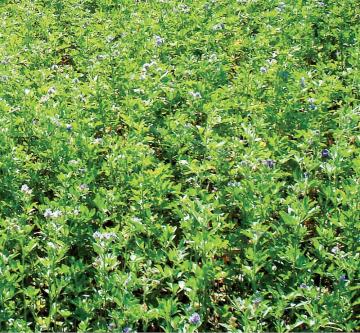
Leucaena leucocephala
Local names: Hindi: Shoo babool English: Black wood Kannada: Chiguru Marathi: Su-babul Philippines: Ipil-Ipil
Leucaena leucocephala is a perennial shrub. The young foliage is very palatable, rich in protein and its seed can be used as a concentrate. The fodder is suitable only for ruminants but is toxic to pigs and horses on account of mimosine, a toxic amino acid. When grown for fodder purposes, the first cut (5-10 cm above ground) can be taken within 6-9 months of sowing and the subsequent cuts may be obtained at intervals of about 4 months. It has extensively propagated in India and other Asian countries. This is most widely used forage tree legume in a two or three or multitier system of fodder production and in various agroforestry models. Due to presence of Rhizobium bacteria, it can fix more than 500 kg nitrogen per hectare per year by the act of symbiosis. It is considered as a miracle tree because of its worldwide success as a long lived and highly nutritious forage tree.
Nutritive value
The fodder is a rich source of carotene and vitamin A. The leaf meal also contain good amount of riboflavin, vitamin K and xanthophyll pigments which can enhance the egg hatchability, color of egg yolk and broiler skin. It contains 22% and 11.84% crude protein and crude fibre, respectively.
Toxicity
Mimosine is a toxic amino acid found in leaves, stems and seeds of Leucaena species of plants at a concentration of up to 100 g per kg dry matter. Mimosine is distributed in all parts of plants and is more concentrated in young growing leaves (9.1%) than roots (0.1%) and wood (0.4%). Heifers fed excessively with leucaena after mating have been shown to have decreased rate of conception, even those conceived gave birth to calves having goiter. The embryonic death due to feeding excess mimosine may be due to amniotic activity or goitrogenic activity of metabolite, 3-hydroxy-4-pyridone.
